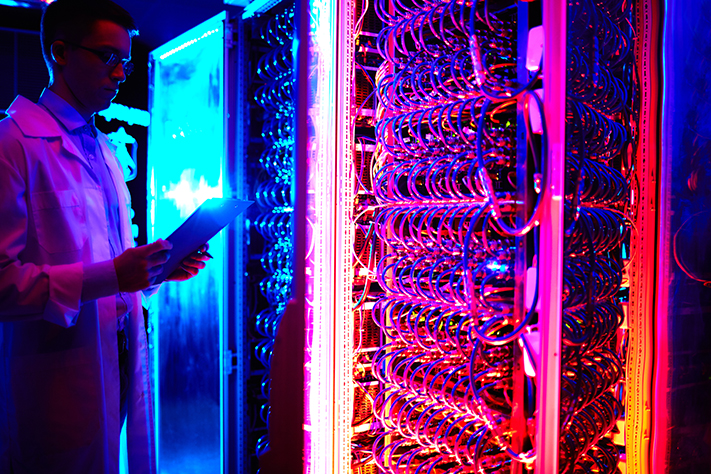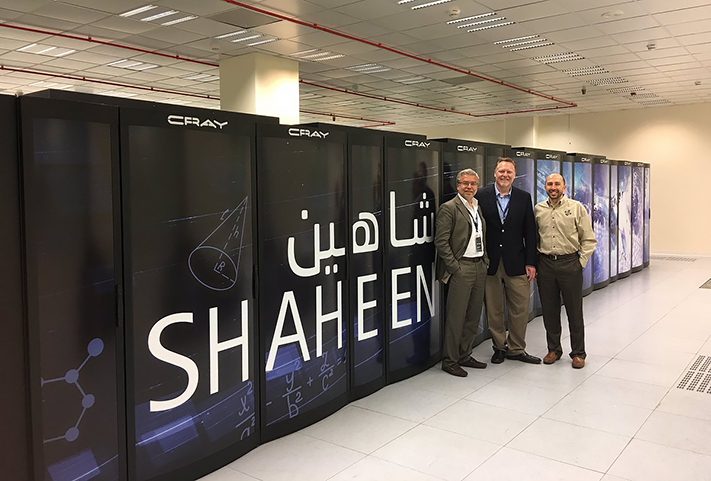Using supercomputers to enable industrial competitiveness

Supercomputers reach into so many areas of design and scientific inquiry. They simulate earthquakes, predict extreme weather and help us understand climate change. They are used to build more effective materials, model the combustion process to design better engines and cleaner fuels, and so much more.
So far, the computing industry has driven the technology forward by creating increasingly faster computers, but what happens when the supercomputer reaches its super capabilities?
Pushing the technological super limits
“Scientists have an insatiable appetite. They have problems that can take advantage of 10 times, 100 times, 1,000 times more computational power than we currently have,” said Steven Scott, senior vice president and CTO of Cray, during his recent visit to KAUST for the University's Global IT Summit.
But Scott says that when it comes to building faster computers, we are starting to reach the fundamental limits. And as the rate of improvement within the technology slows, angst within the computing industry has been growing.
“If computers stop getting faster at the rate they have been in the past, we are going to have to figure out other ways to get that performance,” said Scott. “It’s time for us to be a little less complacent and put pencil to paper to figure out better ways to design these chips.”
This inevitable peak of performance in the underlying circuit technology has opened up a whole new area of processor design where people are exploring different ways of designing processors to get more efficiency. In addition, there has also been a push in designing new technology in the memory and storage hierarchy as another way to improve performance.
Moving Forward to Enable Global Change
While researchers work on ways to advance supercomputer technology, today’s supercomputers are continuing to churn out analytics that are helping scientists produce world-changing research.
“We can build a supercomputer at Cray, but that doesn’t do anything for the world,” said Scott. “But what our customers do with these machines is incredible to watch. They are making the world safer, they are designing better products, they are saving lives.”
Using the technology for industrial competitiveness has become increasingly important which is why many of the world’s top research institutes have supercomputers including KAUST. “It’s the design of better engines, the design of better fuels, the design of lighter more efficient materials… all of these areas can help a regional economy advance in this very competitive global environment,” explained Scott.
In Scott's estimation, supercomputers help academic institutions by enabling scientists to push the boundaries, but it is industrial competitiveness that is the real key to how academic institutions and industry can help a region.

Cray Manager in the Middle East Jean Tachiji (left), Cray CTO Steven Scott, and Computational Scientist Lead at KAUST Supercomputing Core Laboratory Saber Feki stand in front of Shaheen during the KAUST Global IT Summit.
“At KAUST, the partnership with Aramco is good example of this. They were recently able to run a reservoir simulation with a trillion cells. This is absolutely unprecedented in size and scale. As you can model the reservoir more accurately, you can more efficiently extract the oil from those reservoirs,” said Scott. “This is just one example. Other regional industries that have similar problems could have partnerships with KAUST, and by doing so they can get a competitive advantage or improve efficiency.”
From a computational perspective, there will always be a need to increase the size of a supercomputing system or bring in some new processing technologies just to stay on the forefront of science. As Scott says, already every single area of science is waiting for a faster computer to come out, and once you build that faster computer, scientists will have new problems that require an even faster processor.
- By
Michelle Ponto, KAUST News

